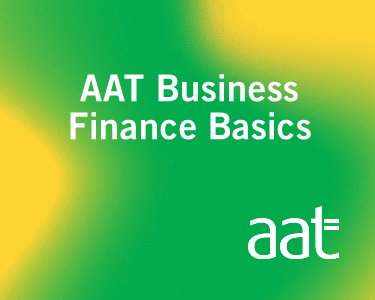In this blog post, we’ll unlock the secrets to building a strong email list and effectively reaching potential customers to drive sales.
We’ll kick off by exploring strategies for expanding your subscriber base, from optimising website sign-up forms to implementing creative incentives and using social media platforms for maximum exposure.
Once your list is looking amazing, we’ll look at the art of targeted email marketing, covering techniques like personalised content, segmented campaigns, and strategic promotions designed to convert your audience.
Through real-world examples and top tips, this blog will give you the tools you need to harness the potential of email marketing, helping you grow your business’s success.
How email marketing can increase your profits
Email marketing allows you to show people on your email list whatever you want to and have it land directly in their inbox. The aim is to get people interested in your business, and show them what you offer and how you’re different. If you do this well, then people will become intrigued and want to find out more. Email marketing can build relationships with both existing and potential customers, helping you increase your profits.
How to increase your subscriber list
First things first, you can’t send emails out without an email list! It’s frustrating when you know you have good content to offer but can’t get the subscribers you need to see it. In this section, we’ll be looking at ways to drive your email list and encourage potential customers to subscribe.
Create targeted lead magnets
This is what you might offer people to convince them to sign up to your email list. A good lead magnet might include giving someone a voucher for 20% off a product if they subscribe to your emailing list. Another example could be a free consultation. Anything free or discounted is going to be enticing.
A weak lead magnet would offer nothing and simply ask people to subscribe – this is unlikely to give you results. People like to have a reason to do something, so you need to present them with this. Duct Tape Marketing offers access to tools like ‘AI prompts for building a marketing strategy’ when signing up for their newsletter. Doing this is appealing to a client as it means they get something by signing up.
Leverage your social media
You can use your social media platforms to make people aware of your newsletter. If they’re already following your accounts, they’re likely to be interested in your business. If you post something and it gets good engagement, you may want to suggest they sign up to your email list. People don’t like being heckled with marketing, so this is where an ‘inbound’ strategy can come in.
Gated content
This is when someone can only access content if they give their details. You may give them the first few pages of an ebook or the first five minutes of a webinar before they can’t see any more for example. Teasing content will leave people wanting more so it’s a great tactic to get signups. However, many companies overdo gated content – the key is to offer something of high enough value.
To watch this series of webinars on Asana you have to give your details for their email list. They give you information on what the webinars are about which convinces you to sign up so you can watch them.
Pitch your newsletter
When pitching your newsletter, you want to give people a reason to subscribe. Is there a certain piece of content they can expect? People like specifics and need a good reason to give their details. Telling them to subscribe for ‘exclusive content’ is vague. You need to tell them exactly what they can expect to get them curious. An example of this is 5 bullet friday. On sign up, you’re told exactly what you can expect – ‘5 things I’ve been loving, using, and reading: books, gadgets, hacks and more’.
Optimise your site for conversions
If you’re getting a high amount of traffic to your site, you can use this too. Have an obvious space on your website that gives customers the opportunity to sign up. For example, Forbes has a clear option to sign up to their newsletter at the top of the site, where most are likely to see it. You’re then given different options for the newsletter you want to receive – creating a personalised approach.
Creating targeted email marketing campaigns
When making emails for your list, you need to know your audience. Once you know your audience, you can segment them and target specific customer personas. Don’t worry if this sounds confusing, it’ll all be explained.
Check your client database
If your customers have expressed interest in getting updates, you may think about moving them to your marketing database. You do have to be careful with this though as you must ask for permission under GDPR laws before you subscribe anyone to your email list.
Utilise historic data
When you send emails out, you’ll quickly find out what people do and don’t like. Looking at data like open rates and click-through rates can help you decide when is best to send emails out. Unsubscribe rates can show you what content people are opposed to. You may also want to look at which products are selling best so you can promote these in your emails. Without looking at data, your emails may not be reaching customers in the way you want them to so it’s good to pay attention to what’s happening after every send.
Define customer personas
Who is your ideal customer? Creating ‘ideal’ customer personas will give you a good guide to targeting. Looking at factors like age, sex and interests will help you do this. You may even draw up a picture to be even more specific. It’s good to have a range of target audiences which you can use to segment emails – we’ll look at this next. If you’re a personal trainer, you may make a customer persona which at a basic level, looks something like this:
Brian, aged 29. He’s been going to the gym often for six months and is enjoying it, but he’s struggling with certain exercises and isn’t getting the results he wants. He’s been looking for a personal trainer to push him in the right direction.
Create segmented campaigns
Once you have specific target audiences, you can start adapting language, tone, and marketing to attract clients. Segmented campaigns allow you to group people to make sure they get emails they’re likely to care about. There’s no point having an email list if your emails aren’t reaching people, which is why targeted campaigns can be useful. You can also do this by utilising historical data. One example of this could be sending more promotional emails to someone who interacts with them often. There are tools which can help you do this like Mailchimp which can also guide you with other aspects of email marketing.
Create personalised content
You might consider using dynamic content that changes based on things like data, preferences, and interaction. We see this in social media algorithms – they show you posts based on your interactions with similar. But we can also apply this to email content. For example, making the wording switch between formal and informal depending on whether the potential customer is B2B or B2C.
A/B testing
For email marketing, this is the process of testing two different emails to see which works better. You may send one variation of an email to a group of subscribers and a different version of that email to another group of subscribers. The differences may include different subject lines or different templates, but each time you’d only change one factor. You can then work out which email works better by looking at data like how many people open it or click on a specific link within the email. Campaign monitor is a good tool to use for doing A/B testing as it does it all for you!
How to improve profits with your emails
One driving factor for many businesses when making an email list is to improve profits. To make more money this way, you need subscribers to complete an action, and getting them to do this can be tricky. Here are some top tips on how to perfect this.
Have one clear target with your email
Don’t send out emails on a whim, you need to know what their aim is and who they’re targeting. You need to think about what’s important and what’s going to help benefit you when you send out an email. Are you creating brand awareness, upselling, or increasing audience engagement? Use relevant data to help you form the decisions behind putting your emails together. What actions do you want your clients to take? This is your CTA.
Improve your CTA
This stands for call to action, referring to how you’re going to provoke a response in your audience. There are many practices to engage clients in your work – you might want to think about your tone of voice for example. Studies suggest that writing a CTA button from your customer’s voice speaks directly to them and encourages clicks. For example, ‘Find my Next Business Idea’. This is where A/B testing can come into play because not every dataset will act the same.
Utilise targeted discounts
As well as experimenting with how you present your emails, you may also want to experiment with discounts. Will you make more money from making something 20% off or 17% off for example – what do your customers engage with more? People love discounts, so including them in your emails is likely to catch a customer’s attention. As well as discounts, you may offer someone early access to something. Doing this can make someone feel part of your community.
Create urgency
You need planned goals in mind to help you get everything done in time to the best standard. Creating SMART goals might be beneficial to you. This stands for specific, measurable, achievable, relevant, and timely. A SMART objective for a business might be to ‘have 2,000 new subscribers on the email list in six months’ time.’
However, we can also relate this to email marketing. For example, when selling an offer, you’d make it clear what you’re giving, how much, how they can get it, how it benefits your potential customer and set a deadline for the offer expiring.
You can experiment with different deadlines, like how long you keep a discount going or add a countdown timer to create more urgency.













